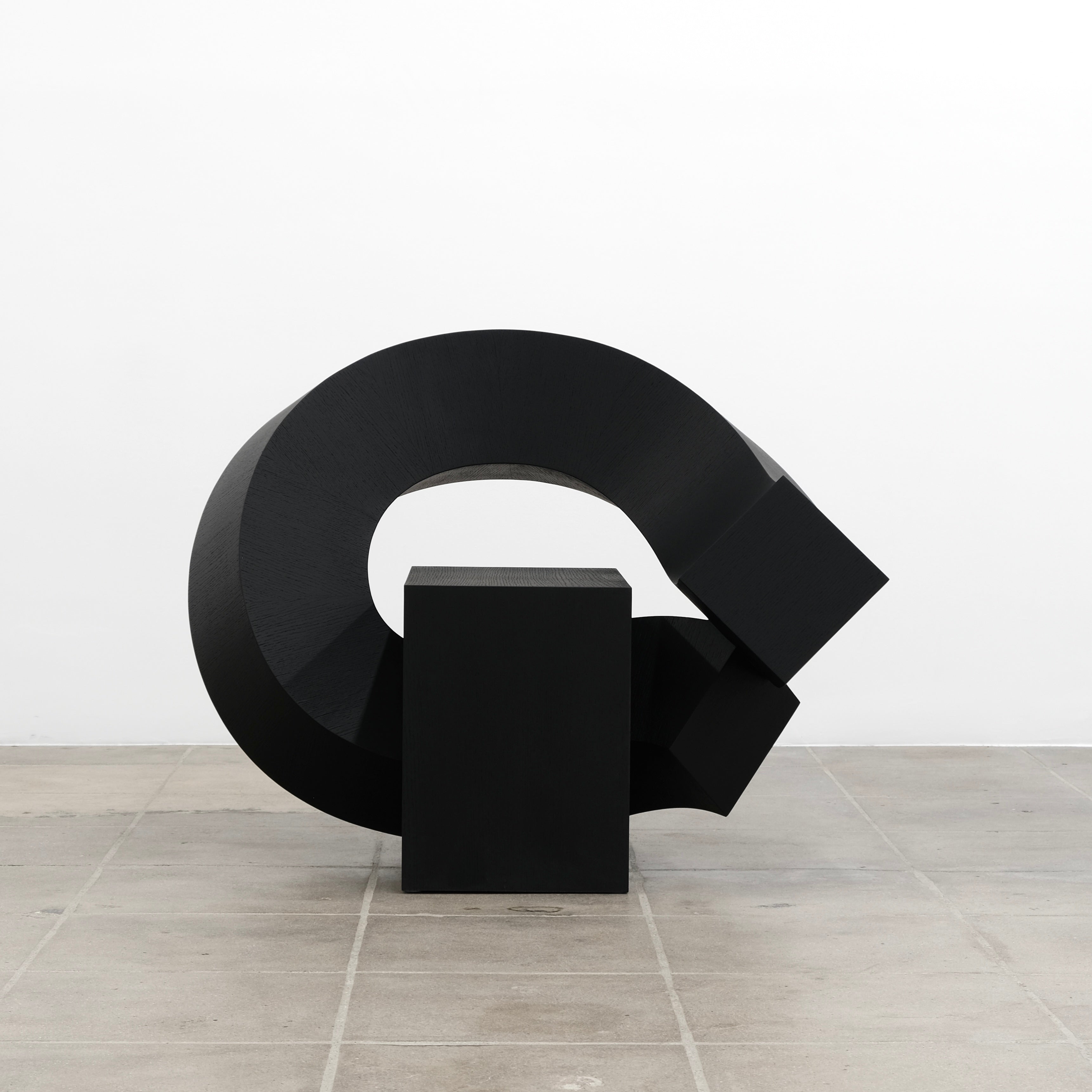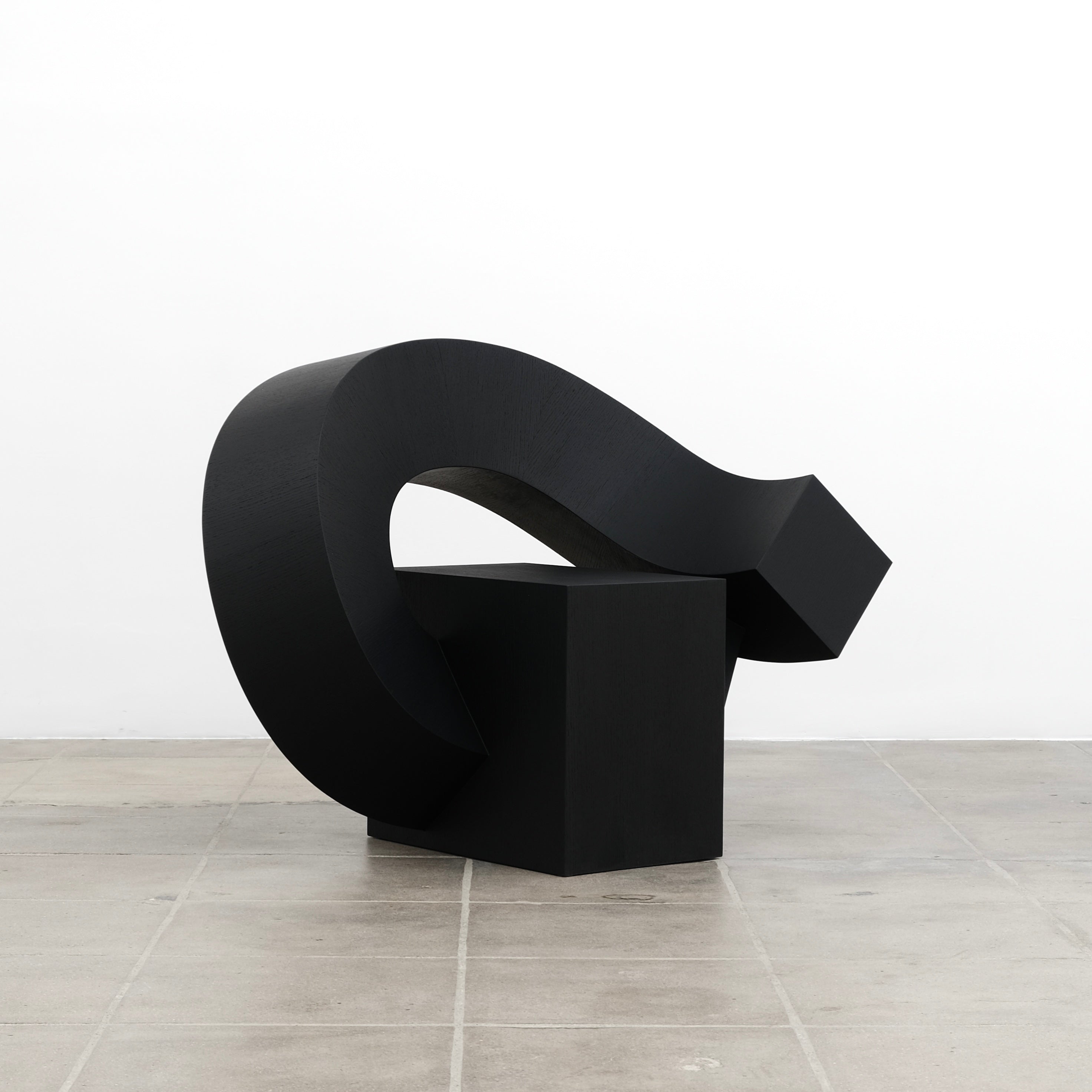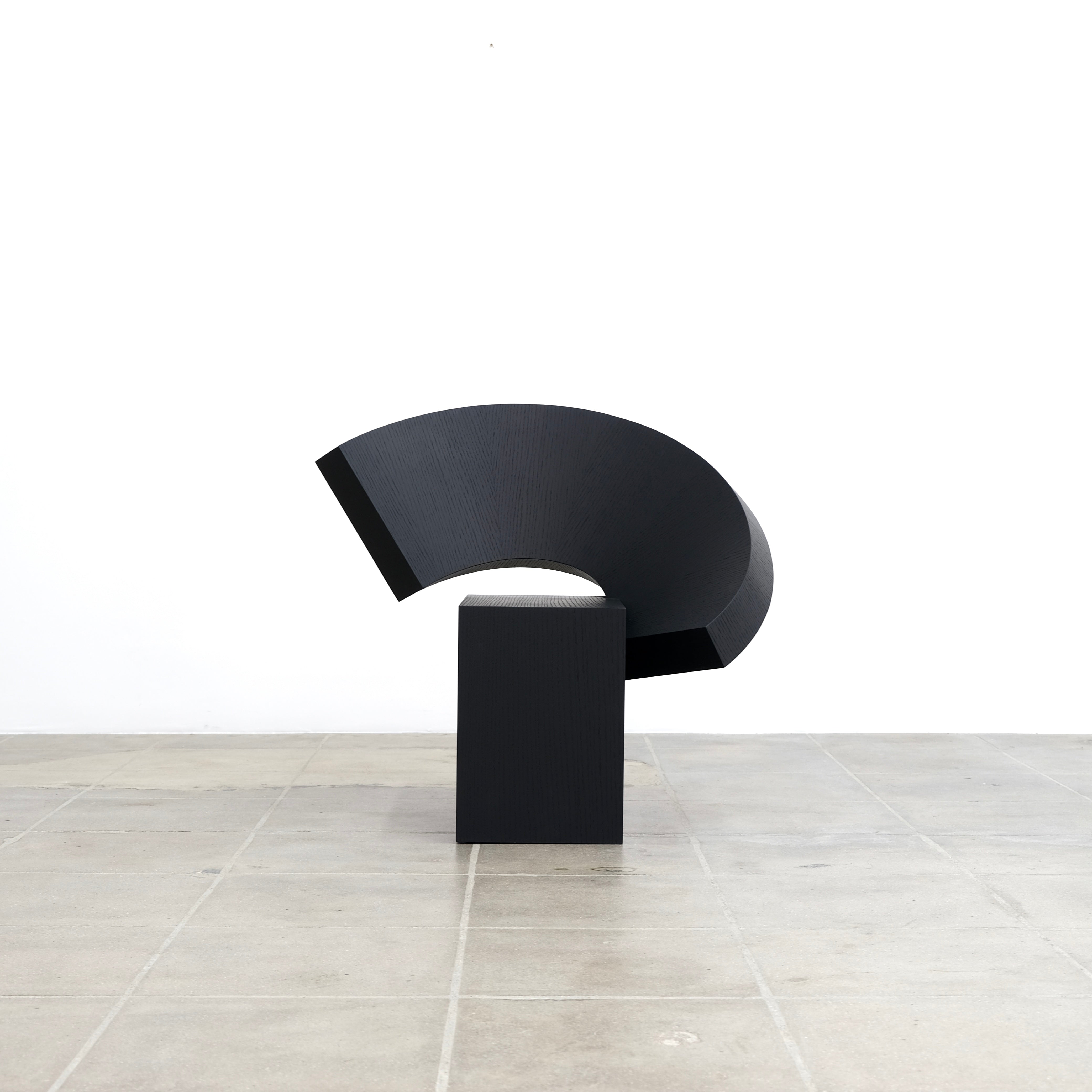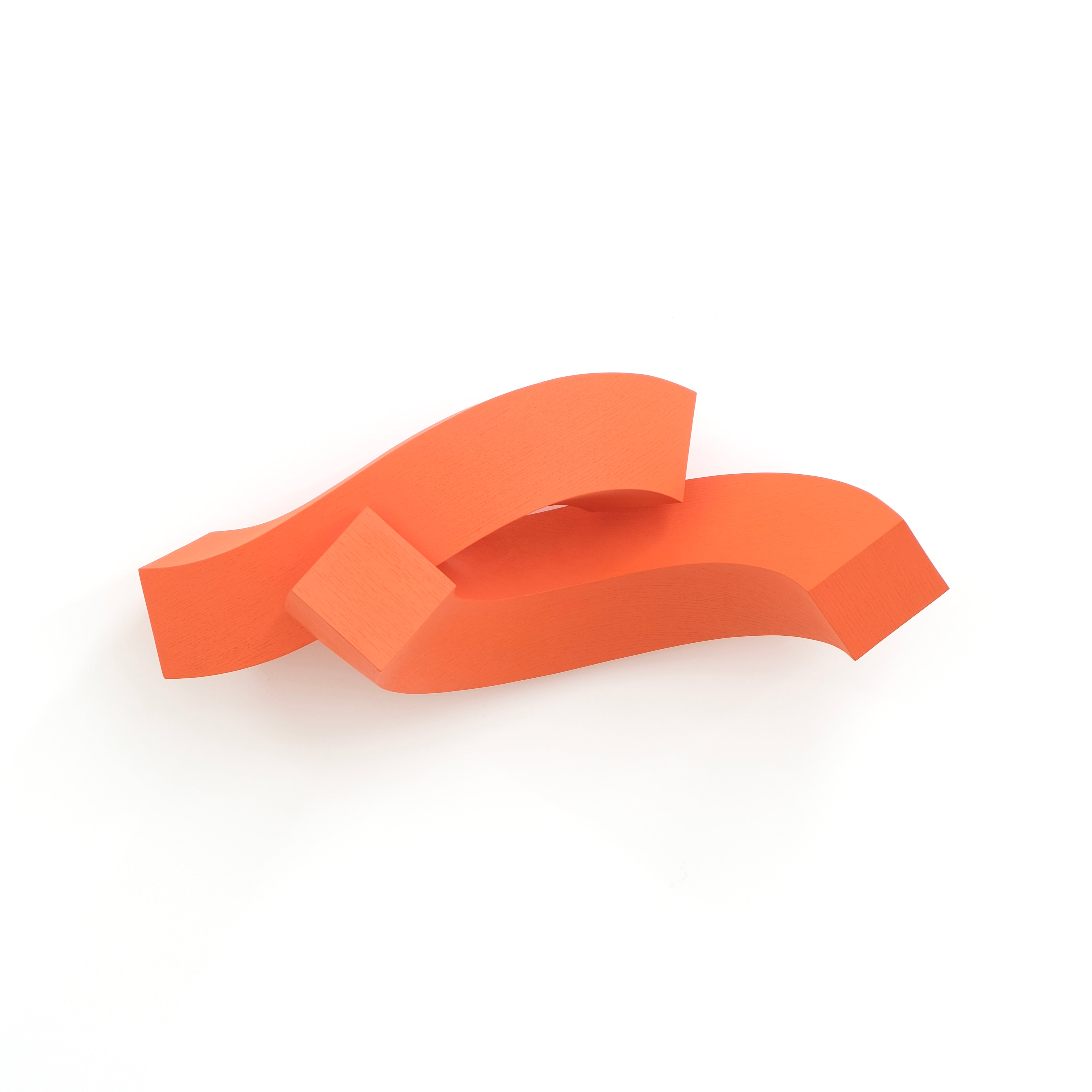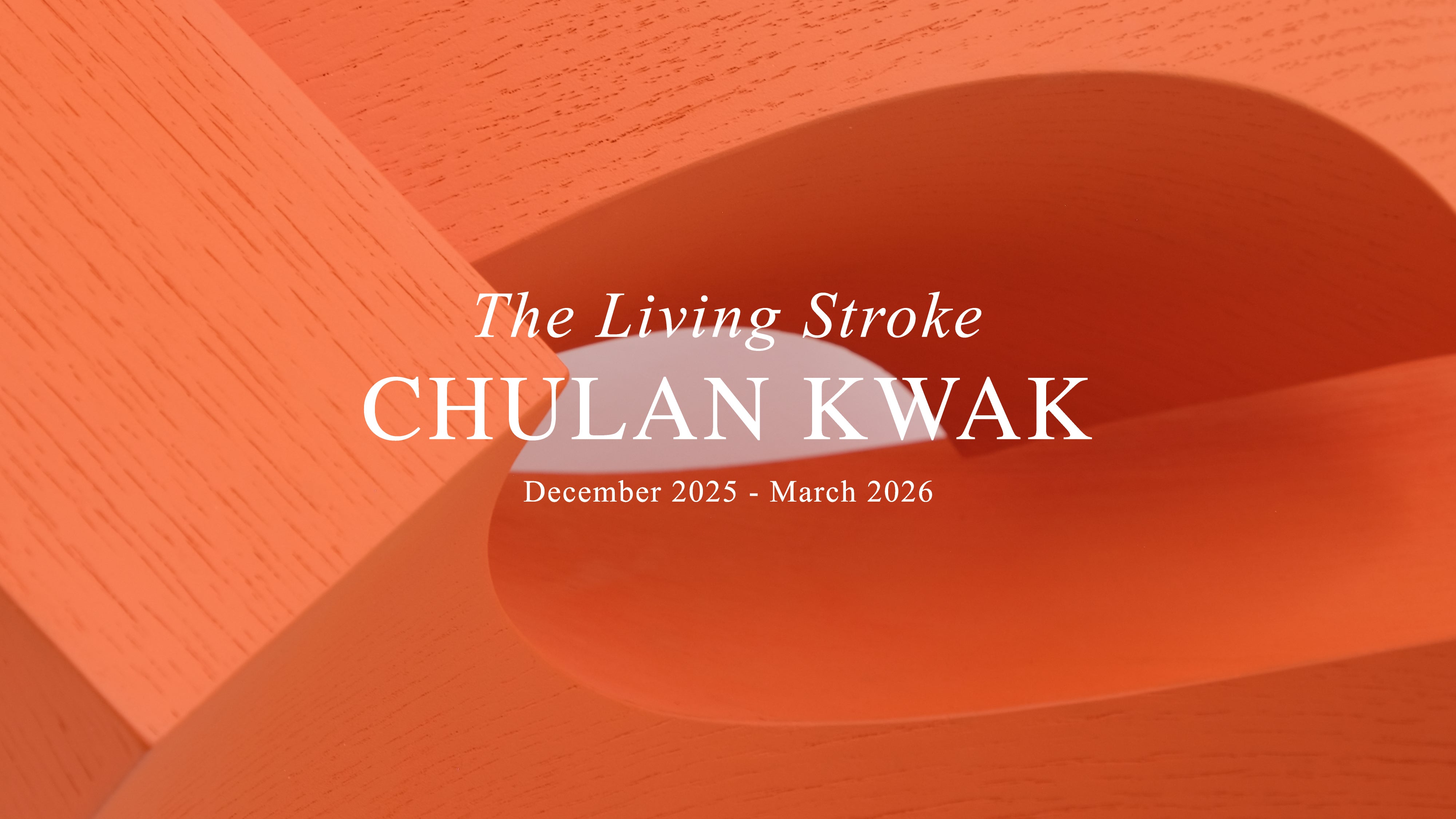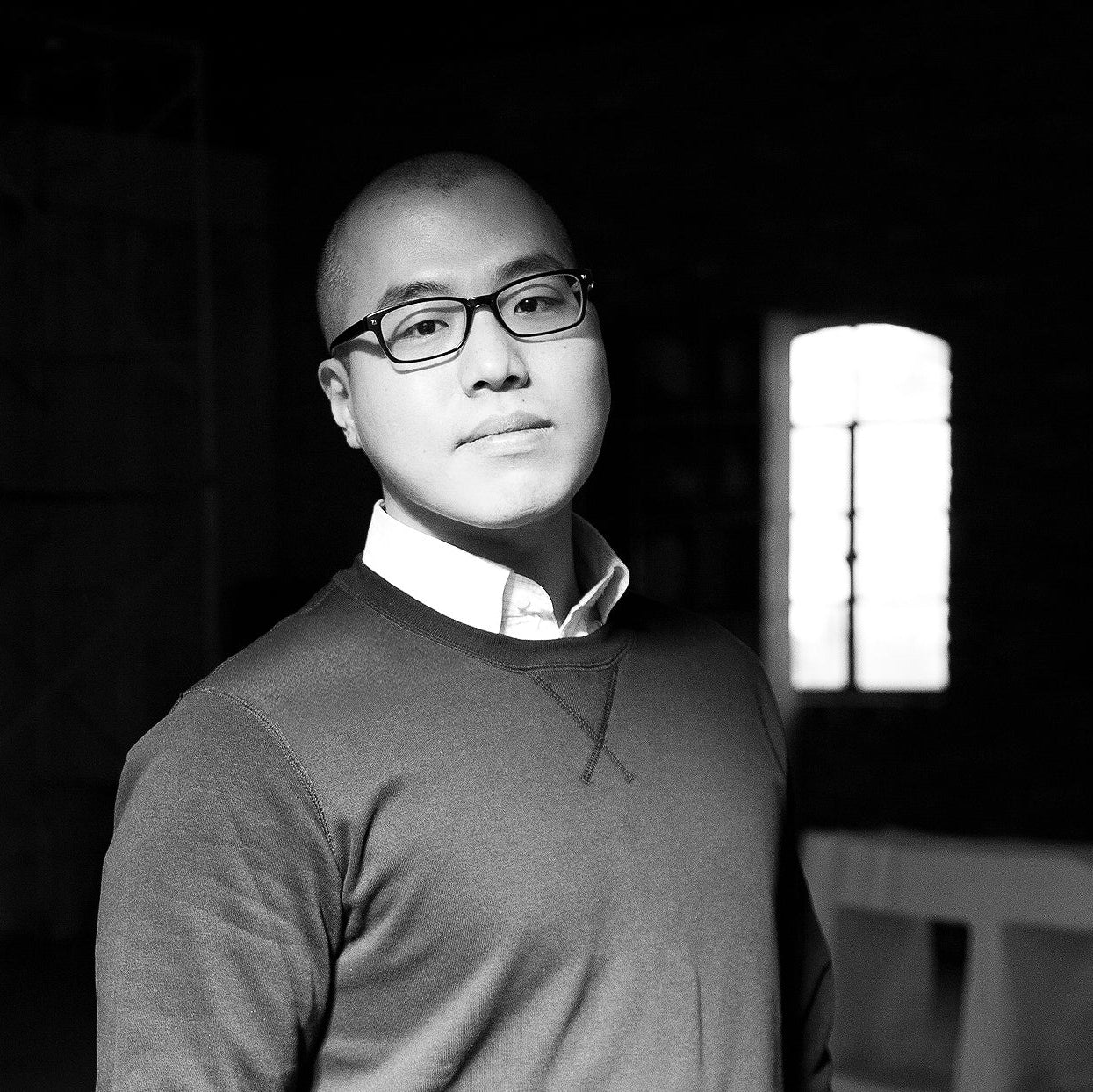
Chulan Kwak is a Seoul-based artist and designer whose practice bridges sculpture, furniture, and spatial design. Educated in both craft and conceptual design, his work explores how the gestural energy of calligraphy can be transformed into three-dimensional form.
At the core of his practice lies the distinction between the line and the stroke. While a line is measured, fixed, and geometric, a stroke is alive—an embodiment of movement, rhythm, and time. Translating that vitality into space, Kwak constructs his works by cutting and assembling planes of plywood and MDF into fluid, volumetric gestures. His approach replaces carving with construction, allowing form to expand as if drawn freely through air.
In his ongoing Cursive Structure series, strokes unfold into spatial compositions—chairs, benches, and sculptures that trace the motion of writing across space. Each work exists between freedom and structure, discipline and intuition, capturing a sense of breath and balance. For Kwak, calligraphy represents more than aesthetic reference; it embodies a worldview of continuous change, where nature and form are in constant transformation.
Through his work, Kwak proposes a new spatial language—one where structure and gesture, architecture and calligraphy, coexist as living form. Kwak currently lives and works in Seoul and is an alumni of Hongik University (BFA in Woodworking and Furniture Design), and Design Academy Eindhoven (MA in Contextual Design).
[C.V.]
Chulan Kwak is a Seoul-based artist and designer whose practice bridges sculpture, furniture, and spatial design. Educated in both craft and conceptual design, his work explores how the gestural energy of calligraphy can be transformed into three-dimensional form.
At the core of his practice lies the distinction between the line and the stroke. While a line is measured, fixed, and geometric, a stroke is alive—an embodiment of movement, rhythm, and time. Translating that vitality into space, Kwak constructs his works by cutting and assembling planes of plywood and MDF into fluid, volumetric gestures. His approach replaces carving with construction, allowing form to expand as if drawn freely through air.
In his ongoing Cursive Structure series, strokes unfold into spatial compositions—chairs, benches, and sculptures that trace the motion of writing across space. Each work exists between freedom and structure, discipline and intuition, capturing a sense of breath and balance. For Kwak, calligraphy represents more than aesthetic reference; it embodies a worldview of continuous change, where nature and form are in constant transformation.
Through his work, Kwak proposes a new spatial language—one where structure and gesture, architecture and calligraphy, coexist as living form. Kwak currently lives and works in Seoul and is an alumni of Hongik University (BFA in Woodworking and Furniture Design), and Design Academy Eindhoven (MA in Contextual Design).
[C.V.]


